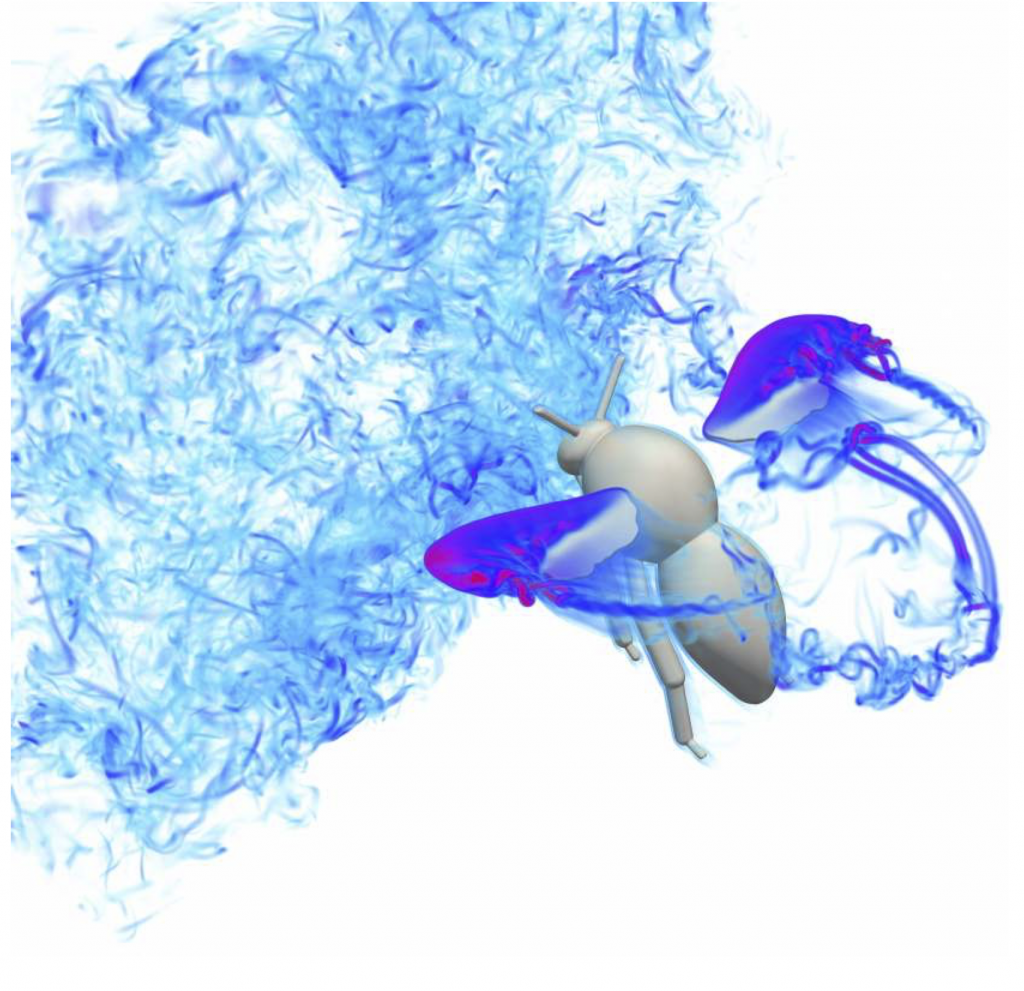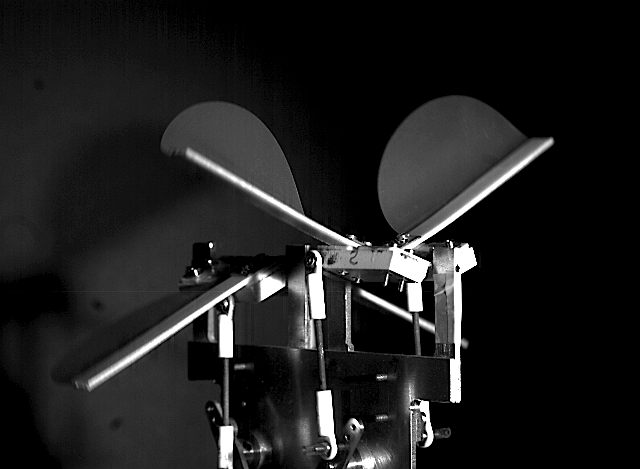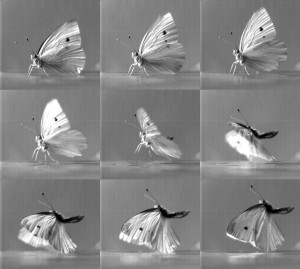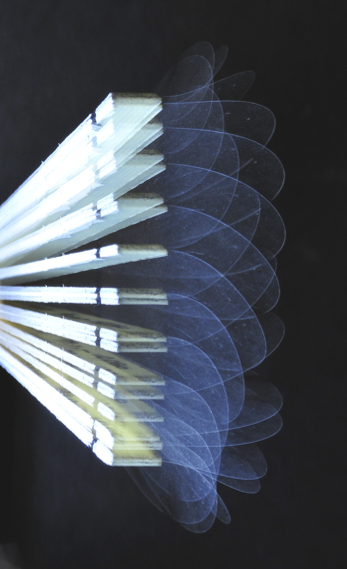Image credit: T. Engels (see also Engels et al. Physical Review Fluids 4, 013103, 2019)
Insect and insect-inspired aerodynamics: unsteadiness, structural mechanics and flight control
R. Bomphrey & R. Godoy-Diana
Current Opinion in Insect Science 30, 26–32 (2018)
[doi:10.1016/j.cois.2018.08.003]
Flying insects impress by their versatility and have been a recurrent source of inspiration for engineering devices. A large body of literature has focused on various aspects of insect flight, with an essential part dedicated to the dynamics of flapping wings and their intrinsically unsteady aerodynamic mechanisms. Insect wings flex during flight and a better understanding of structural mechanics and aeroelasticity is emerging. Most recently, insights from solid and fluid mechanics have been integrated with physiological measurements from visual and mechanosensors in the context of flight control in steady airs and through turbulent conditions. We review the key recent advances concerning flight in unsteady environments and how the multi-body mechanics of the insect structure — wings and body — are at the core of the flight control question. The issues herein should be considered when applying bio-informed design principles to robotic flapping wings.




